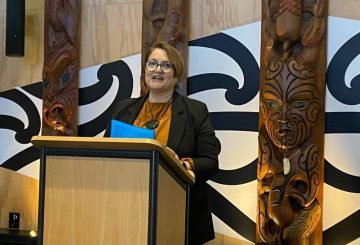Fish & Game New Zealand는 지역 의회가 수자원 보존 명령 (WCO) 을 시행하여 뉴질랜드의 강과 호수를 보호하고 강화할 것을 촉구하고 있습니다.
WCO는 모든 수역에 적용할 수 있는 최고 수준의 보호 장치이며 뉴질랜드의 가장 아름다운 야생 강, 습지 및 호수를 보호하도록 설계되었습니다.
Fish & Game 대변인은 “Fish & Game은 현재 전국 13개 강과 두 개의 호수에 설치된 15개의 WCO 중 12개를 확보하는 일을 담당했습니다.” 라고 말합니다.
“그러나 Fish & Game은 지역 의회가 WCO에 제공하는 보호 메커니즘을 시행하기에 충분한 조치를 취하지 않고 있다고 우려하고 있습니다.”
Fish & Game은 송어, 연어 및 사냥감을 관리하여 뉴질랜드 사람들에게 건강한 휴양을 제공하고 150년 이상 낚시꾼과 사냥꾼이 전통으로 누려온 환경을 보호하기 위해 노력하고 있습니다.
이 단체는 노스 캔터베리 피쉬 앤 게임 (North Canterbury Fish & Game) 과 함께 환경 캔터베리 환경 관련 소송에 참여했으며, 환경 법원으로부터 라카이아 강에서 WCO를 감시하고 집행할 법적 의무가 있는지에 대한 선언적 판결을 구하고 있다.
Fish & Game의 최고 경영자 코리나 조던은 지역 의회가 WCO 시행에 대한 법적 책임이 있다고 말했습니다.
“수자원 보존 명령은 수로 위의 국립공원과 같습니다.” 라고 Corina는 말합니다.
“Fish & Game은 지역 협의회가 WCO를 행동으로 옮길 책임이 있다고 생각합니다.
뉴질랜드에서 가장 큰 꼬불꼬불한 강 중 하나인 라카이아 강은 WCO를 통해 레크리에이션 어업, 야생동물 서식지, 자연적 특성 및 편의시설을 포함하여 뛰어난 하천 내 가치와 특성을 지닌 것으로 확인되었습니다.
크레딧: sunlive.co.nz

















































-660x440.jpg)












